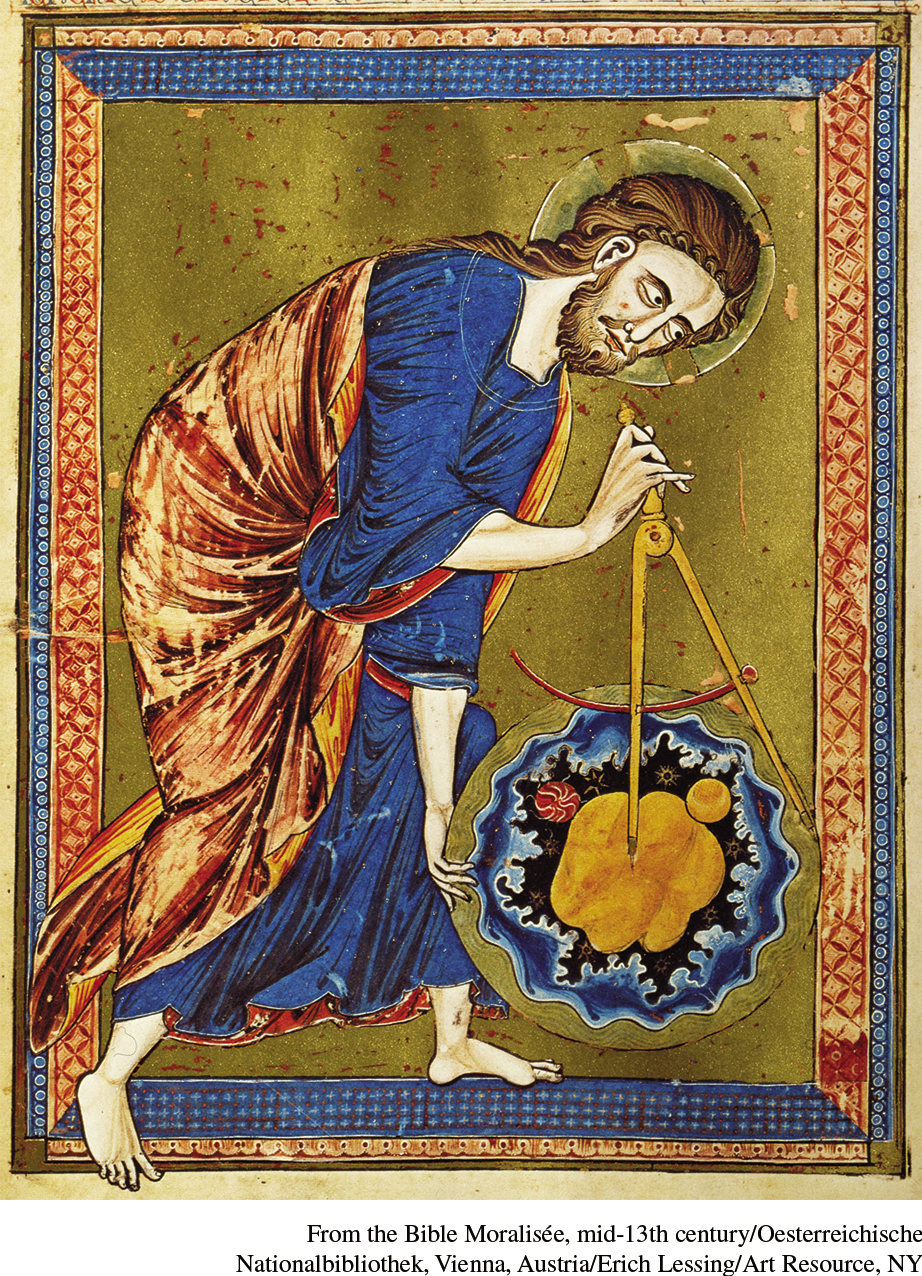Catching Up
As the civilization of the West evolved, it was clearly less developed in comparison to Byzantium, China, India, and the Islamic world. Europe’s cities were smaller, its political authorities weaker, its economy less commercialized, and its technology inferior. Muslim observers who encountered Europeans saw them as barbarians. An Arab geographer of the tenth century commented on Europeans: “Their bodies are large, their manners harsh, their understanding dull, and their tongues heavy…. Those of them who are farthest to the north are the most subject to stupidity, grossness and brutishness.”24 Muslim travelers over the next several centuries saw more to be praised in West African kingdoms, where Islam was practiced and gold was plentiful.
Furthermore, thoughtful Europeans who directly encountered other peoples often acknowledged their own comparative backwardness. “In our time,” wrote a twelfth-
Change
In what ways did borrowing from abroad shape European civilization after 1000?
Curious about the rest of the world, Europeans proved quite willing to engage with and borrow from the more advanced civilizations to the east. Growing European economies, especially in the northwest, reconnected with the Eurasian trading system, with which they had lost contact after the fall of Rome. Now European elites eagerly sought spices, silks, porcelain, and sugar from afar even as they assimilated various technological, intellectual, and cultural innovations, as Snapshot: European Borrowing demonstrates. When the road to China opened in the thirteenth and fourteenth centuries, many Europeans, including the merchant-
In this willingness to borrow, Europe resembled several other third-
Technological borrowing required adaptation to the unique conditions of Europe and was accompanied by considerable independent invention as well. Together these processes generated a significant tradition of technological innovation that allowed Europe by 1500 to catch up with, and in some areas perhaps to surpass, China and the Islamic world. That achievement bears comparison with the economic revolution of Tang and Song dynasty China, although Europe began at a lower level and depended more on borrowing than did its Chinese counterpart (see Chapter 8). But in the several centuries surrounding 1000, at both ends of Eurasia, major processes of technological innovation were under way.
SNAPSHOT: European Borrowing
Like people in other emerging civilizations of the third-
| Borrowing | Source | Significance |
| Horse collar | China / Central Asia via Tunisia | Enabled heavy plowing and contributed to European agricultural development |
| Stirrup | India/Afghanistan | Revolutionized warfare by enhancing cavalry forces |
| Gunpowder | China | Enhanced the destructiveness of warfare |
| Paper | China | Enabled bureaucracy; fostered literacy; prerequisite for printing |
| Spinning wheel | India | Sped up production of yarn, usually by women at home |
| Wheelbarrow | China | Laborsaving device for farm and construction work |
| Aristotle | Byzantium / Islamic Spain | Recovery of classical Greek thought |
| Medical knowledge/treatments | Islamic world | Sedatives, antiseptics, surgical techniques, optics, and knowledge of contagious diseases enriched European medicine |
| Christian mysticism | Muslim Spain | Mutual influence of Sufi, Jewish, and Christian mysticism |
| Music/poetry | Muslim Spain | Contributed to tradition of troubadour poetry about chivalry and courtly love |
| Mathematics | India / Islamic world | Foundation for European algebra |
| Chess | India/Persia | A game of prestige associated with European nobility |
In Europe, technological breakthroughs first became apparent in agriculture as Europeans adapted to the very different environmental conditions north of the Alps in the several centuries following 500 C.E. They developed a heavy wheeled plow that could handle the dense soils of Northern Europe far better than the light, or “scratch,” plow used in Mediterranean agriculture. To pull the plow, Europeans began to rely increasingly on horses rather than oxen and to use iron horseshoes and a more efficient collar, which probably originated in China or Central Asia and could support much heavier loads. In addition, Europeans developed a new three-

Beyond agriculture, Europeans began to tap non-
Technological borrowing was also evident in the arts of war. Gunpowder was invented in China, but Europeans were probably the first to use it in cannons, in the early fourteenth century, and by 1500 they had the most advanced arsenals in the world. In 1517, one Chinese official, on first encountering European ships and weapons, remarked with surprise, “The westerns are extremely dangerous because of their artillery. No weapon ever made since memorable antiquity is superior to their cannon.”27 Advances in shipbuilding and navigational techniques—
Europe’s passion for technology was reflected in its culture and ideas as well as in its machines. About 1260, the English scholar and Franciscan friar Roger Bacon wrote of the possibilities he foresaw, and in doing so, he expressed the confident spirit of the age:
Machines of navigation can be constructed, without rowers … which are borne under the guidance of one man at a greater speed than if they were full of men. Also a chariot can be constructed, that will move with incalculable speed without any draught animal…. Also flying machines may be constructed so that a man may sit in the midst of the machine turning a certain instrument by means of which wings artificially constructed would beat the air after the manner of a bird flying … and there are countless other things that can be constructed.28